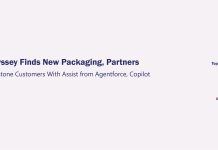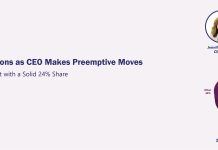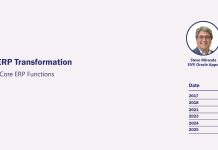With a dose of innovation and ready-made templates, the latest crop of Enterprise Resource Planning applications – which have been around for more than 30 years – have taken on a new look and feel in order to accommodate the workstyle of next-generation users.
A host of ERP vendors from the stalwarts such as SAP and Unit4 to Cloud-centric specialists like Freshbooks and Workday have invested heavily in R&D enabling new features including real-time decision support and project performance management for industry-specific business processes, as well as enhanced mobility and analytics support for daily tasks such as invoicing and reporting.
Unit4, a $600-million vendor that caters to services industries from government to professional services, has carved out a self-driving ERP product strategy and messaging with the growing demand of its target audience by providing users with practical and readily available tools for compressing the time needed to complete complex tasks like drafting project planning proposals and managing project risks.
In December 2015 the Dutch software vendor introduced Unit4 Reference Projects and Unit4 Project Forecast. The former is designed for making recommendations to inform the “go/no go” decision process of projects and subsequently on how to craft a tuned project proposal based on similar projects with high performance from the past, and the latter proactively tracks project performance and predicts forecasting scenarios in order to mitigate risks.
Erik Tiden, who recently joined Unit4 as chief technology officer, said with a long history of selling into the Professional Service Automation space, Unit4 now runs machine learning tools to analyze and interpret massive amounts of current and historical project data in order to help optimize output of thousands of services-based customers from business consulting firms to global engineering outfits.
The output could mean new insights into actual costs, revenue and profit data to accelerate the bidding process, minimize risk and ensure success and profitability, said Tiden who headed ERP and CRM development efforts at Microsoft and SAP before joining Unit4.
Catering to a new generation of users, the increased ubiquity of modern tools like home robots for floor-cleaning, recommendation engines for ecommerce and personalized dashboards for mobile devices, ERP systems have evolved along the way not just to keep them relevant, but also to make the underlying business processes less obtrusive, and perhaps more self-running. Unit4’s self-driving ERP fits that narrative nicely.
Other vendors are rallying behind the same value proposition. SAP, for instance, is pitching its S/4 HANA Finance as the linchpin that could drastically simplify complex tasks such as easing tax burden against the backdrops of mountains of rules and regulations by leveraging in-memory database and advanced analytics and visualization tools.
UK-based Sage is touting the real-time capabilities of its new Sage Live package, which is based on the Salesforce.com platform, to transform the accounting function of a large swath of small to midsized companies. Both Freshbooks and Workday have made their attractive user interface – ideal for mobile devices and native Cloud delivery – the centerpiece of their ERP strategy that makes mundane chores like invoicing one’s clients a delightful experience simply by swiping one’s touchscreen.
Unit4’s Advantage
What works to Unit4’s advantage is its mastery of strategic verticals like higher education, state and local government as well as thousands of business and IT consulting firms in addition to those that focus on different disciplines from architecture to not for profit.
With more than a quarter of its 4,000+ employees devoted to R&D, Unit4 expects to establish Self-driving ERP as a key differentiator of its portfolio of business solutions serving people-centric businesses such as professional services.
Self-driving ERP – along with buzzwords like consumerization of IT – could trigger a wave of adoptions especially from services-based industries that now face mounting pressures to better manage labor and healthcare costs, variables that are much more difficult to contain than say commodity prices.
If done properly, self-driving ERP will result in systems that significantly reduce or even eliminate non-valued adding manual tasks, while on the other hand proactively serve users in situations where people make the difference, rather than expecting the users to serve the systems. This will lead to freeing up precious time and a much more intuitive user experience resulting in reduced training costs for semi-skilled workers, while boosting productivity further for the most sought-after professionals.
Anything that is self-running from a robot to unmanned vehicle could run into roadblocks. Issues such as noncompliance, abuse and other unintended consequences from spam mail to robocall and perhaps insufficient checks and balances could surface if any self-running system is not properly managed.
However, at a time when technology innovation is becoming more indispensable than ever to help firms improve service delivery, any effort that could make the monolithic ERP – a perception that still holds true among certain users – more attractive, interactive and attuned to the needs of everyday users is worth pursuing.






